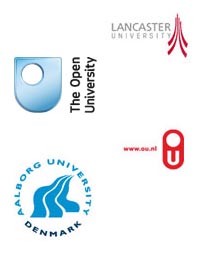

Combining collaboration spaces: Identifying patterns of tool use for decision-making in a networked learning environment
Kate Thompson, Nick Kelly, The University of Sydney, NSW, Australia
This paper describes a study that examines the processes of two groups using a combined collaboration space (a synchronous chat and an asynchronous wiki). It uses data from the combined space to analyse the way that group processes change over time. We examine the tasks about which students made decisions during a month-long collaborative learning project, undertaken as part of a larger course. In order to examine the processes of collaboration, particularly in relation to the tools used and the decisions made, both chat and wiki data were coded for the task, sub-task and decision being made by the students. The data were rendered as visual forms which allowed us to describe the different ways in which the two groups used the tools in their collaboration for different types of decisions. We make an argument for the value in identifying Alexandrian properties in the structure of the collaboration, using deep interlock and ambiguity as an example. Identification of such properties, we think, will aid the future development of educational design patterns.
Deep interlock and ambiguity was identified in the structure of the groups’ collaboration. We discuss the structure in terms of the tools that the groups used – chat, wiki and email. For some tasks and subtasks, the use of the tools was simple, and decisions were made during a single chat. However, some decisions resulted in a complex use of both the wiki and the chat, and Group A in particular used both tools synchronously, tying the ideas they discussed in the chat back to the knowledge recorded in the wiki, as they chatted. We concluded that the flexibility that the two groups were given meant that they could determine the pattern of tool use and collaboration that best supported their collaboration. We found the visualisations to be extremely useful in identifying the collaboration of a group over time, and in visualising the multiple streams of data that were analysed. The identification of these patterns of learning and collaboration would support the patterns approach to educational design. We propose that this initial study be expanded to include other measures of process.
Keywords
Processes of learning; patterns; synchronous collaboration; asynchronous collaboration; online chat; wiki; decision-making
| About NLC | Welcome Messages | 2012 Conference Proceedings | Conference Organisation |Invited Speakers |Proceedings Handbook | Past Conference Proceedings | Exploring the Theory, Pedagogy and Practice of Networked Learning |Contact |